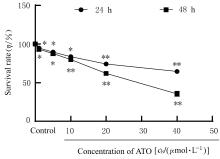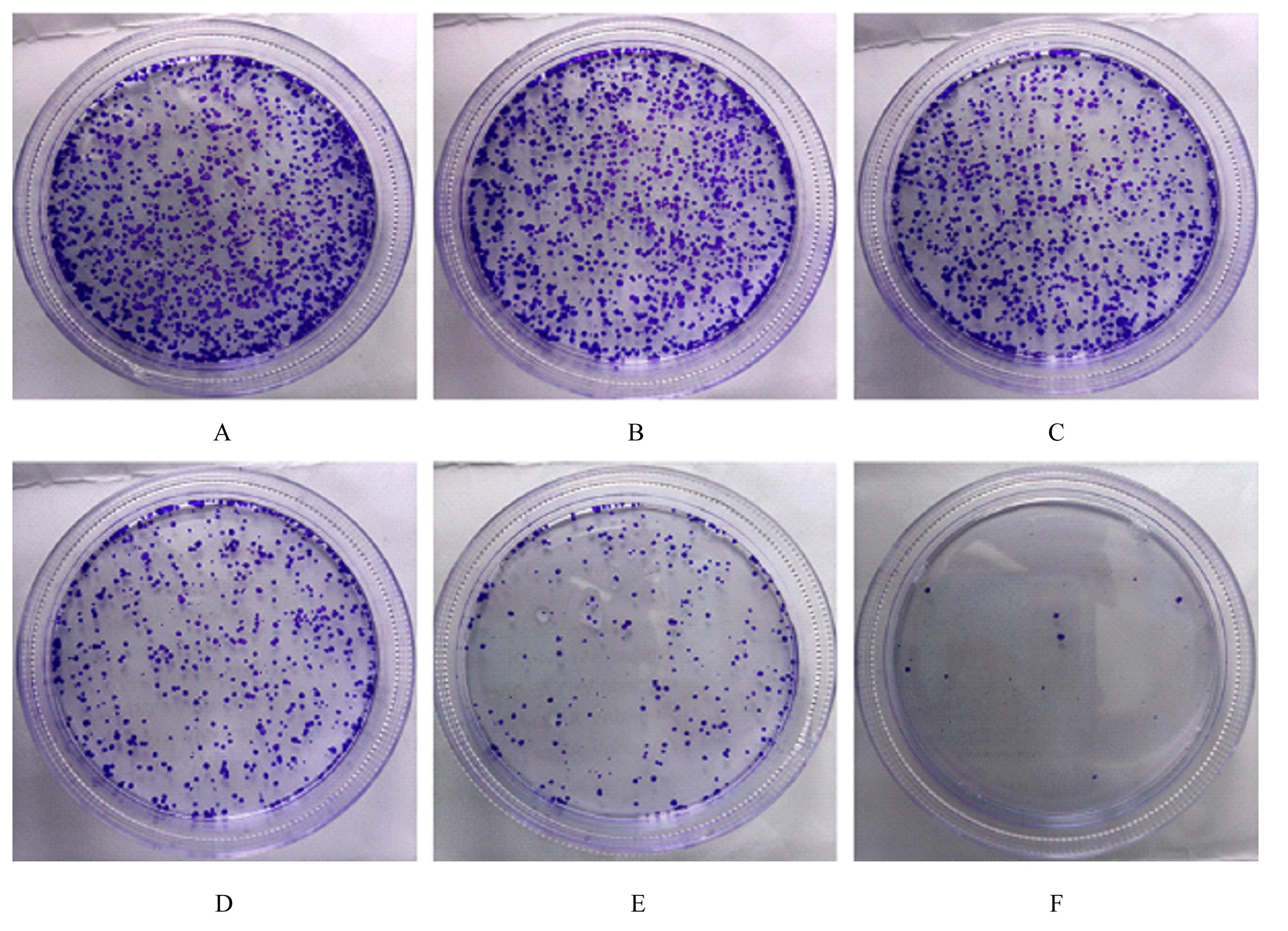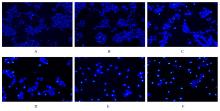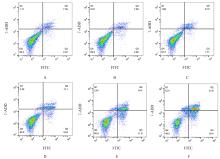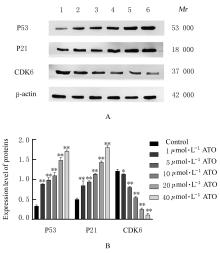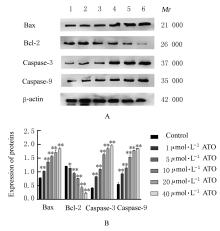| 1 |
GONZALEZ M, RIERA A. Tongue cancer [J]. Head Neck, 2020, 41(3): 821-827
|
| 2 |
MIZUNO K, TAKEUCHI M, KIKUCHI M, et al. Outcomes in patients diagnosed with tongue cancer before and after the age of 45 years[J]. Oral Oncol, 2020, 110: 105010.
|
| 3 |
TANG M M, DAI W C, WU H, et al. Transcriptome analysis of tongue cancer based on high‑throughput sequencing[J]. Oncol Rep, 2020, 43(6): 2004-2016.
|
| 4 |
FATEHI HASSANABAD A, WONG J V S. Molecular determinants of statin-sensitivity in cancer[J]. Am J Clin Oncol, 2020, 43(3): 160-162.
|
| 5 |
IANNELLI F, LOMBARDI R, MILONE M R, et al. Targeting mevalonate pathway in cancer treatment: repurposing of statins[J]. Recent Pat Anticancer Drug Discov, 2018, 13(2): 184-200.
|
| 6 |
HE Z H, YUAN J M, SHEN F H, et al. Atorvastatin enhances effects of radiotherapy on prostate cancer cells and xenograft tumor mice through triggering interaction between bcl-2 and MSH2[J]. Med Sci Monit, 2020, 26: e923560.
|
| 7 |
JONES H M, FANG Z W, SUN W C, et al. Erratum: Atorvastatin exhibits anti-tumorigenic and anti-metastatic effects in ovarian cancer in vitro [J]. Am J Cancer Res, 2018, 8(5): 915.
|
| 8 |
ALARCON MARTINEZ T, ZEYBEK N D, MÜFTÜOGLU S. Evaluation of the cytotoxic and autophagic effects of atorvastatin on MCF-7 breast cancer cells [J]. Balkan Med J, 2018, 35(3): 256-262.
|
| 9 |
XU X T, CHEN J, REN X, et al. Effects of atorvastatin in combination with celecoxib and tipifarnib on proliferation and apoptosis in pancreatic cancer sphere-forming cells[J]. Eur J Pharmacol, 2021, 893: 173840.
|
| 10 |
LEE J, JUNG J H, HWANG J, et al. CNOT2 is critically involved in atorvastatin induced apoptotic and autophagic cell death in non-small cell lung cancers[J]. Cancers (Basel), 2019, 11(10): 1470.
|
| 11 |
ALMANGUSH A, BELLO I O, HEIKKINEN I, et al. Stromal categorization in early oral tongue cancer[J]. Virchows Arch, 2021, 478(5): 925-932.
|
| 12 |
IANNELLI F, LOMBARDI R, MILONE M R, et al. Targeting mevalonate pathway in cancer treatment: repurposing of statins[J]. Recent Pat Anticancer Drug Discov, 2018, 13(2): 184-200.
|
| 13 |
ALKHALIL M, AL-HIARI Y, KASABRI V, et al. Selected pharmacotherapy agents as antiproliferative and anti-inflammatory compounds[J]. Drug Dev Res, 2020, 81(4): 470-490.
|
| 14 |
SHENG B, SONG Y Z, ZHANG J N, et al. Atorvastatin suppresses the progression of cervical cancer via regulation of autophagy[J]. Am J Transl Res, 2020, 12(9): 5252-5268.
|
| 15 |
SU G, SUN G L, LV J, et al. Hsa_circ_0004831 downregulation is partially responsible for atorvastatinalleviated human umbilical vein endothelial cell injuries induced by ox-LDL through targeting the miR-182-5p/CXCL12 axis[J]. BMC Cardiovasc Disord, 2021, 21(1): 221.
|
| 16 |
TARANGELO A, MAGTANONG L, BIEGING-ROLETT K T, et al. P53 suppresses metabolic stress-induced ferroptosis in cancer cells[J]. Cell Rep, 2018, 22(3): 569-575.
|
| 17 |
NEBENFUEHR S, KOLLMANN K, SEXL V. The role of CDK6 in cancer[J]. Int J Cancer,2020,147(11): 2988-2995.
|
| 18 |
COSTA B P, NASSR M T, DIZ F M, et al. Methoxyeugenol regulates the p53/p21 pathway and suppresses human endometrial cancer cell proliferation[J]. J Ethnopharmacol, 2021, 267: 113645.
|
| 19 |
TOMPKINS K D, THORBURN A. Regulation of apoptosis by autophagy to enhance cancer therapy[J]. Yale J Biol Med, 2019, 92(4): 707-718.
|
| 20 |
WANG Z J, LI H Y, YAN J Y, et al. Flavonoid compound breviscapine suppresses human osteosarcoma Saos-2 progression property and induces apoptosis by regulating mitochondria-dependent pathway[J]. J Biochem Mol Toxicol, 2021, 35(1): e22633.
|
| 21 |
ZHOU Z, MENG M H, NI H F. Chemosensitizing effect of astragalus polysaccharides on nasopharyngeal carcinoma cells by inducing apoptosis and modulating expression of bax/bcl-2 ratio and caspases[J]. Med Sci Monit, 2017, 23: 462-469.
|
| 22 |
XIE L, CHEN Y, CHEN J, et al. Anti-tumor effects and mechanism of GA-13315, a novel gibberellin derivative, in human lung adenocarcinoma: an in vitro and in vivo study[J]. Cell Mol Biol Lett, 2019, 24: 6.
|
| 23 |
SUBBARAYAN S, SUBRAMANIAN S, SENTHIL KUMAR N. Recombinant pierisin-5 induces apoptosis and differential expression of bcl-2,bax, and p53 in human cancer cells[J]. DNA Cell Biol, 2019, 38(8): 773-785.
|

